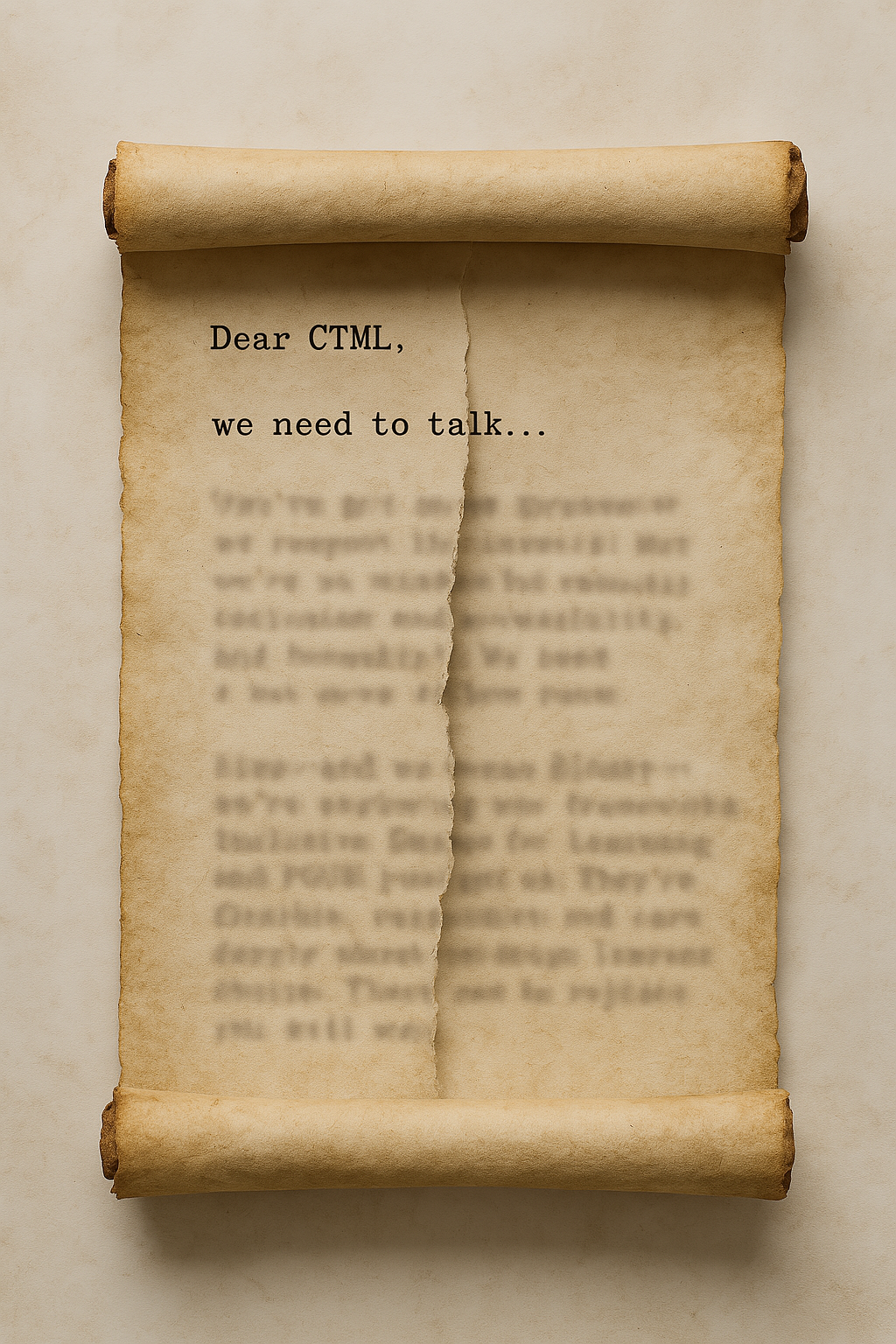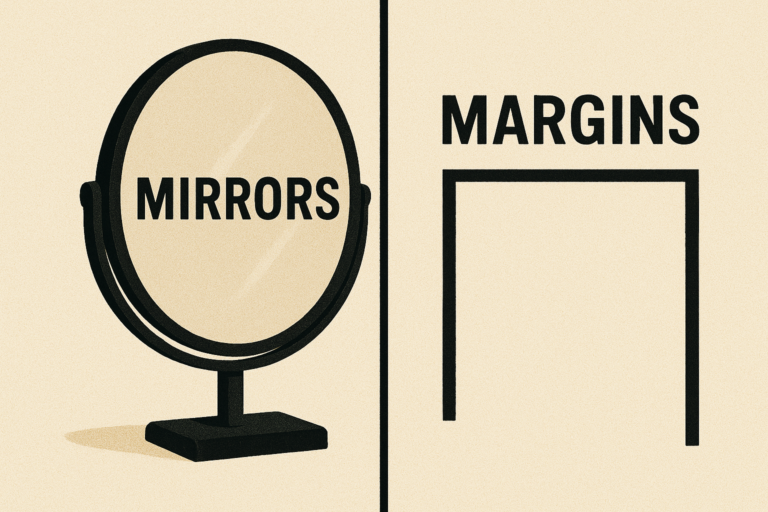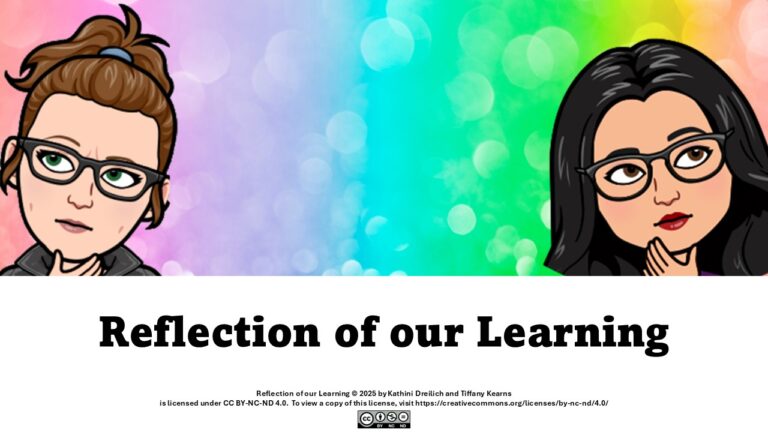The CTML Ultimatum

Featured Image by CoPilot
Tiffany’s Reflection on Some CTML Shortcomings
When Kati and I first met the Cognitive Theory of Multimedia Learning we were enamoured with its charm. Such a comprehensive framework connecting to the human mind with a learner-centered approach. Dare I say robust? But the more we got to know CTML, the more we realized that there were a few things that kept coming up and rubbing us the wrong way.
We found we needed to ignore some of the principles in order to maintain the inclusive and accessible model we were trying to uphold. For example, CTML kept telling us, “This is how the brain works”, but we know from our research on inclusive design that learning isn’t universal but rather individual – one-size-fits-one. So, keeping this in mind, each brain is different from the next and there is no one “correct” way to learn.
CTML’s redundancy principle that states – narration needs to be in balance with printed text as redundancy can lead to cognitive overload. And the modality principle states that – graphics and narration should be presented in favour of printed text. Deal breakers for us CTML! Kati and I both have learners that benefit from graphics, narration, and identical on-screen text. Removing on-screen text to avoid redundancy can hinder learners who benefit from reading along. Kati went to great lengths and spent hours importing .vtt files to create subtitles that allow learners to read with the audio and adjust the learning to what they need – to use or not use, and to translate or not translate – depending on the learner. These very terribly terrible (.vtt) files, which we nicknamed them due to the amount of work they take, did require a lot of time and effort but in the end made our videos more robust! If CTML disvalues written language in favor of images, we began to wonder how we could use the principles when teaching language and literacy? Many of the videos and H5P content we made involved words or punctuation marks as the featured images themselves.

CTML also clashes in ways with the POUR accessibility principles.
Perceivable – CTML suggests avoiding identical on-screen text and narration to reduce cognitive load. But POUR encourages captions and text alternatives to support users with hearing impairments.
Understandable – CTML favors audio narration with visuals (instead of text) to optimize learning. But POUR requires content to be perceivable in multiple formats—especially for screen reader users.
Operable – CTML recommends breaking content into chunks controlled by the learner. But if not implemented accessibly (e.g., with keyboard navigation), it can hinder operability for users with motor impairments.
Robust – CTML supports informal, conversational tone for engagement. But POUR’s Robust principle emphasizes compatibility with assistive tech, which may struggle with overly casual or idiomatic language.
Dear CTML, we need to talk…
You’ve got some great moves—we respect the classics! But we’re on a mission for radical inclusion and accessibility, and honestly? We need a bit more elbow room.
So, we’re loosening the collar on a few of your buttoned-up principles. Not throwing them out, just…casually unbuttoning the top two for comfort. Think of it as an accessibility glow-up.
Also—and we mean this kindly—we’re seeing other frameworks. Inclusive Design for Learning and POUR understand our need for flexibility, learner voice, and remixable love. They’re into shared ownership and adaptability. They’re not here to replace you—but to help us all level up.
In short: we’re keeping the best of you, mixing in some fresh perspectives, and serving a more inclusive learning experience. It’s not a breakup—it’s a breakthrough.
Designing boldly, captioning thoughtfully, co-creating always—
Tiffany and Kati

References
Inclusive Design Research Centre. (n.d.-b). Philosophy. OCAD University. Retrieved April 18, 2025, from https://idrc.ocadu.ca/about/philosophy/
Mayer, R. E. (2021). Cognitive Theory of Multimedia Learning. In The Cambridge Handbook of Multimedia Learning (3rd ed., pp. 57–72). Cambridge University Press. https://doi.org/10.1017/9781108894333.008
The CTML Ultimatum © 2025 by Tiffany Kearns is licensed under CC BY-NC-ND 4.0





